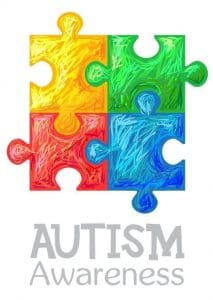
DESIGNING FOR AUTISM
 April was Autism Awareness month and as designers we can have a direct impact on an autistic person’s environment. As advocates for the autism community we’re encouraged and eager to learn more.
April was Autism Awareness month and as designers we can have a direct impact on an autistic person’s environment. As advocates for the autism community we’re encouraged and eager to learn more.
In general autism can affect a person ability to communicate and interact with others. But in reality that’s an over-simplified explanation. Autism has a broad range of conditions that affects each person differently and to varying degrees. And research has found that many autistic behaviors can be improved by adapting their environments to support them and help them flourish. Autism is a sensory stimulation issue and the built environment can either be over-stimulating or provide a supportive environment.
Therefore, paying attention to a home or buildings light, sound, color, textures, patterns and spacial arrangements are all parts of the puzzle. Luckily, these are factors that we specialize in and why we can make such a big impact in the following areas.
- SOUND:
- Loud noises are distracting and disturbing for most people, but those with autism are particularly affected by poor acoustics. Generally speaking, incorporating soft materials to a space minimizes the effects of sound bouncing off hard surfaces (e.g. putting an area rug over hard flooring). But many building materials provide technically rated acoustic specifications too. Adding both types of materials can be an easy and focused way to control sound. Acoustically rated upholstery, draperies, flooring, wallcovering and even paint are some of the best ways to minimize over-stimulation.
- SPATIAL CONSIDERATIONS
- Space planning and paying special attention to how multiple people move through a space is another one of the greatest ways to make a space autistic friendly. Creating wide corridors and designated zones allows those with autism more control over their personal zones and how and where they spend their time.
- TACTILE MATERIALS
- Tactile considerations such as fabric textures and patterns can also be a way to control levels of stimulation and provide a nurturing environment.
- LIGHT CONTROL
- Finally, light control is another important element. Having multiple layers of light and dimming capability is important so that a person can adjust it based on how they’re feeling from moment to moment.
It’s important to note that even though all these elements should be addressed, it should be done on a case by case basis. Each person is a unique individual and that includes all people on the autism spectrum. What works for one person may not work for another and what works for one person for one day, may need to be adjusted the next day. Giving end users options in which they can make adjustments of each factor will provide the greatest long terms outcome for all occupants.
To learn more about autism and how you can help, visit Autism Speaks at www.autismspeak.org 




